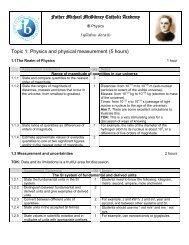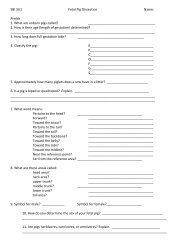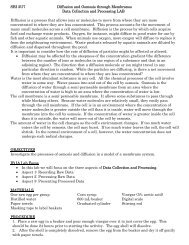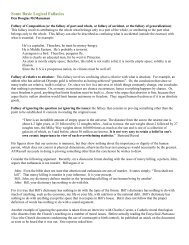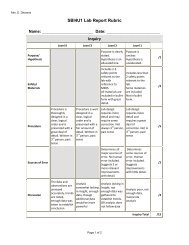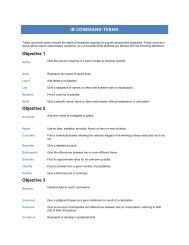Inductive Reasoning
Inductive Reasoning
Inductive Reasoning
Create successful ePaper yourself
Turn your PDF publications into a flip-book with our unique Google optimized e-Paper software.
Argument A is a standard case of induction by enumeration. In B we have a standard case of a statistical syllogism. Therelationship between A and B and the example of modified induction by enumeration is that example 1 of Modified Inductionby Enumeration and A have the same first premise (87% of polled IBS are D). As a result, we can conclude that 87% of allIBS are D in both arguments, though we do not do this explicitly in example 1 of Modified Induction by Enumeration.Instead, in example 1 we implicitly use as evidence the statement which occurs as the conclusion of argument A, and thisinformation, along with the premise S is IBS, is used as a statistical syllogism of the form shown in argument B. In short,Modified Induction by Enumeration functions much like a statistical syllogism whose first premise is derived on thebasis of induction by enumeration.Since the conclusion in the argument form of modified induction by enumeration depends, in part, on a statistical syllogism,the percentage of the sample that has the property in question must be greater than 50. For example, consider thefollowing:Example 210% of the voters polled favored proposal B. Johnny is a voter, and therefore Johnny favors proposal B.The form of the above argument is:10% of observed V are FJ is VTherefore, J is FAs with example 1, the above can be understood on the basis of induction by enumeration and a statistical syllogism. Therelevant instances of these argument forms are the following:A)10% of observed V are FTherefore 10% of all V are FB)10% of all V are FJ is VTherefore, J is F.Although A satisfies all the conditions necessary for an acceptable instance of induction by enumeration (correct form andcorrect percentages), argument B is not an acceptable instance of a statistical syllogism since the percentage of V’s whichare F is not greater than 50%. Since the acceptability of example 2 rests on both argument A and B, and since argument Bis unacceptable, example 2 is unacceptable.Finally,Example 3100% of McGivney students polled favored a reduction in classroom interruptions. Anwal favors a reduction in classroominterruptions since Anwal is a McGivney student.100% of observed M are FA is MTherefore, A is F







